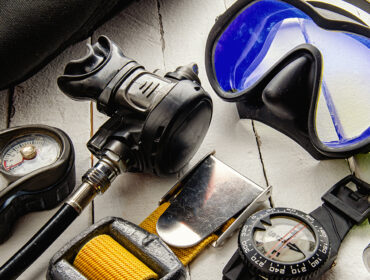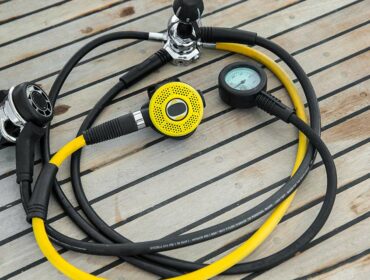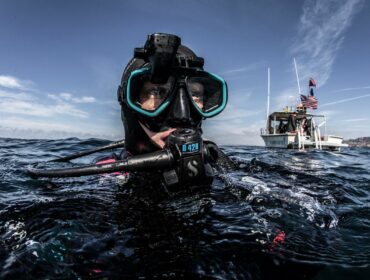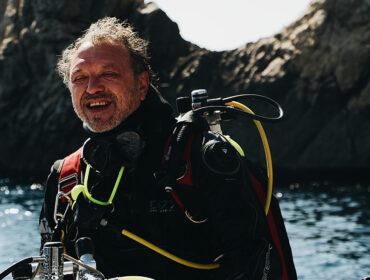Perhaps the most important piece of any diver’s equipment is their regulator. A scuba regulator is literally the lifeline between you and your air source while diving. The entire breathing apparatus, comprised of the regulator and gas cylinder, or tank, are the only means you have of breathing underwater. These vital pieces of equipment are what make up the name for our favorite sport: Self Contained Underwater Breathing Apparatus.
The primary function of a scuba regulator is to decrease the high pressure under which the air in your dive tank is stored to a safer pressure at which you can breathe at any depth. To accomplish this, a scuba regulator works in two stages:
First Stage
Air is compressed and stored in the tank under high pressure, about 3000psi (pounds per square inch). In order to reduce this pressure, the first stage has a valve or piston that lowers the pressure to about 140psi to disperse to the hose. The valve opens to let some air into the hose and then closes again. A regulator compensates for decreased pressure in the tank as air is used, and as the diver changes depth, which changes the ambient water pressure.
Second Stage
The second stage of a scuba regulator is the part that goes in your mouth and delivers air effortlessly as you inhale and exhale. It contains a mechanism that reduces the intermediate pressure in the hose coming from the first stage to the surrounding water pressure, making it comfortable and easy to breathe. As with the first stage, the second stage also contains a piston or diaphragm construction which starts and stops the airflow.
The mouthpiece, exhaust valve, and an emergency purge valve or button are all parts of the second stage of the scuba regulator. The exhaust valve lets the air escape into the water when you exhale. It is a one way valve and does not allow water to enter from the outside. When the purge button (usually the front cover of the second stage in modern models) is pushed, it forces air to flow continuously into the second stage chamber forcing any water out of the mouthpiece through the exhaust valve.
With this mechanism, divers are actually able to vomit while holding the second stage in their mouths instead of pulling it out and risking accidental water inhalation. It’s not pleasant to think about, but what is nice to consider is that this wonderful piece of technology makes it possible to survive underwater — even in the least optimum conditions — until you can safely return to the surface.




